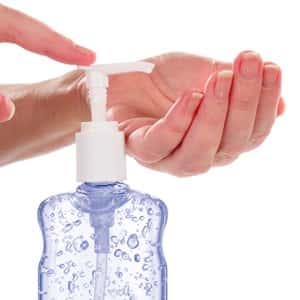
To keep infections from spreading in health care facilities, health care workers must get germs off their hands effectively. The World Health Organization (WHO) believes that hand sanitizer is better than hand-washing because it is faster and more effective at removing germs.
Using Hand Sanitizer to Get Germs Off Hands:
How do you apply hand sanitizer? The WHO has developed a six-step 30-second procedure that it recommends for health care workers. But a study conducted in Switzerland suggests that all six steps may not be necessary.
The WHO technique starts with a palm full of alcohol-based sanitizer. Then the individual rubs the hands palm to palm. After that, the person places the right hand over the left and interlaces the fingers, then switches. Then he or she rubs the palms together with the fingers interlaced. After that, the worker scrubs the back of each hand against the opposing palm and covers both thumbs in sanitizer. There’s little doubt this should be a good way to get germs off, but people don’t always take the time to follow these steps exactly.
Can You Use a Less Complex Technique for Removing Germs?
The researchers, led by Dr. Sarah Tschudin-Sutter of University Hospital Basel in Switzerland, compared four hand sanitizing techniques in 20 volunteers. One group followed the WHO recommendations, with a 30 second process. A second group followed a similar procedure but for only 15 seconds. The third and fourth groups followed a simpler three-step procedure for 30 and 15 seconds respectively. Fifteen seconds proved just as good at reducing bacterial counts on the hands as 30 seconds, and the simplified procedure worked to get germs off as well as the six-step one.
The investigators reported these results at the European Congress of Clinical Microbiology & Infectious Diseases in Amsterdam on April 15, 2019.

